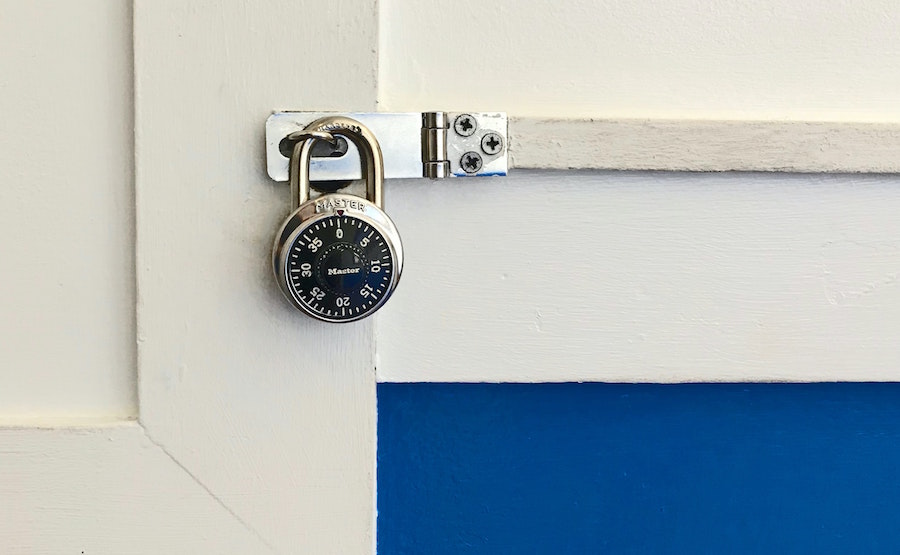
Does your house or condo have a dedicated space for storage? While it’s nice to keep your infrequently used possessions and collections on-site versus an off-site facility, storing items at home often creates a false sense of security. This can lead to damage or theft of important valuables. Whether it’s in the garage, basement, attic, or other room please note the following tips to protecting your stuff in storage at home.
6 Tips to Keeping Stored Possessions (at Home) Safe from Damage and Theft
Box or Crate Small Possessions
Never stack and store possessions without adequate containment. Head to your local home retailer and purchase moving boxes and/or hard-plastic crates (depending upon how fragile items are) to store items within. If especially fragile, add bubble and/or shrink wrap to your cart, and wrap each item individually before placing them in the receptacles. Essentially, treat stored items the way you do (or should do) when doing a household move. Not only does a box or crate afford greater protection, it makes it easier to stack items and maximize space. It also serves as a deterrent to malicious individuals who may sneak into an open garage (etc.) with limited time to make away with your goods. If items are boxed and crated, thieves can’t tell what they are and will be less likely to take the time to open them if they are worried about being discovered by you or neighbors. Hard plastic crates are also effective against other pests, such as mice, rats, and rodents who may seek to nest and defecate all over stored goods.
Wrap Large Items
If storing large items such as seasonal recreational equipment, holiday decor, or home accents that aren’t going to be used for months or longer, provide them with a sheath of protection via bubble wrap or shrink wrap. This will protect them from falling and shifting in storage, and will also help prevent scratches and other abrasions should you or other households occupants accidentally knock them over or hit them when placing other hard items into at-home storage. If storing especially large and expensive items such as home electronics or recreational personal vehicles (ATV, motocross, jet-ski, etc.) you may consider using a professional heat-sealed polyethylene wrapping service. Not only do the varying forms of wrap provide protection against abrasions they also mitigate the risk of water damage that may come from flooding, a leaky roof, or condensation.
Install a Racking System
Even if small possessions are stored in boxes and crates, and large items are wrapped tight, they are still at risk of damage if they sit on the ground. Water damage is the leading home insurance claim in Canada, and since it typically starts from the ground up, you need to keep stored goods off the floor. By installing a sturdy racking system with a solid metal or hard plastic base you not only elevate possessions from flooding, you provide them with more secure containment so that they don’t slide, shift, and fall should there be any event (from rambunctious dog to earthquake) that compromises their stability.
Lock the Door
Blocking access to stored possessions not only reduces the risk of theft during a break-in, it also protects them from household occupant mishaps. For instance, your kids may be on the hunt for their favorite baseball mitt and rifle through storage to find it and knock over your stored great-grandmother’s rare vase in the process. By locking the door and keeping the key in a safe place, you control who goes in and out of the storage space which reduces the potential for mishaps.
Inspect the Space for Inherent Risks
The more secure the space the better. It’s for this reason we advise against storing valuables in garages and basements where there are exposed water pipes and hot water heaters, along with flammables such as oil, gas, and cleaning solutions, in addition to easier access points for criminals. These spaces also typically have small cracks and fissures along window or door trim, which creates an irregular internal climate that can damage sensitive possessions via humidity and condensation. If possible, find a room, large closet, unused pantry, or other space within the primary part of your residence (which may enjoy the benefits of your HVAC system) and leverage it for at-home storage.
Add a Tougher Layer of Protection Through Better Insurance Coverage
If you are storing art, collectibles, jewelry, and other valuables you will want to take an inventory of it all, complete with appraisal values. Traditional home insurance may not cover the full value of these items, which is why it makes good sense to provide dedicated (for specific items) protection via a more comprehensive policy. If you reside in British Columbia, please contact Park Insurance today to discuss the coverage options for your stored valuables.